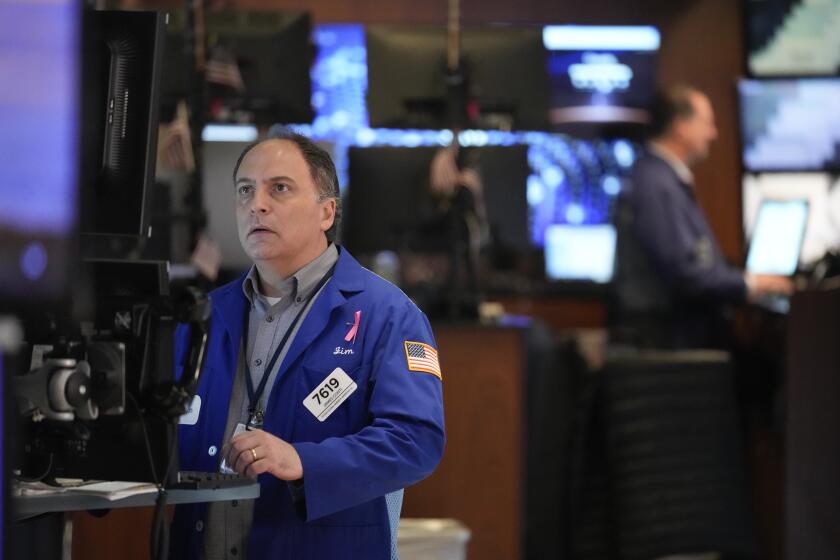Consumer spending, exports boost economy
The economy picked up speed in the summer, growing at a brisk 3.9% annual pace, the fastest rate in 1 1/2 years, even as a credit crunch plunged the housing market deeper into turmoil.
The latest snapshot of the country’s economic health, released by the Commerce Department on Wednesday, suggests that the economy is holding up well to the strains in the housing and credit markets, which intensified during the third quarter and rocked Wall Street.
The main factors helping to push up overall economic activity in the July-to-September quarter were that consumers ratcheted up their spending and U.S. businesses sold more goods abroad while boosting some investment at home.
The third quarter’s growth rate was up slightly from a 3.8% pace in the second quarter and was the strongest showing since the first quarter of 2006.
The latest increase in gross domestic product topped analysts’ forecasts for a 3.1% annual growth rate. The gross domestic product is the value of all goods and services produced within the United States and is considered the best barometer of the country’s economic fitness.
The strong performance came despite the worsening housing slump.
Builders slashed investment in housing projects at a 20.1% annual rate in the third quarter, the largest drop in a year. That followed an 11.8% cut in the second quarter and provided stark evidence of the problems in the housing market.
But despite the housing slump and credit crunch, consumers, whose spending is a driving factor in the economy’s health, rediscovered their appetite to shop in the third quarter. Consumer spending rose at a 3% pace, up from the second quarter’s 1.4% growth rate.
One of the reasons people are continuing to spend is that the nation’s labor market has managed to stay fairly sturdy despite all the problems facing the economy. Job creation perked up in September and wages grew solidly. The unemployment rate crept up to 4.7% but remained low by historical standards.
Wage and job gains have served as shock absorbers for some of the negative forces stemming from weaker home prices and more restrictive credit.
Still, the housing meltdown has been painful. Foreclosures have soared. Lenders have gone out of business. And financial institutions have recorded huge losses tied to surging defaults on sub-prime mortgages.
Businesses increased their spending on equipment and software at a 5.9% pace in the third quarter, up from 4.7% in the second. They also boosted their investment in inventories.
Another big factor in the third-quarter showing was U.S. exports of goods and services, which grew at a 16.2% rate, the biggest increase since 2003.






